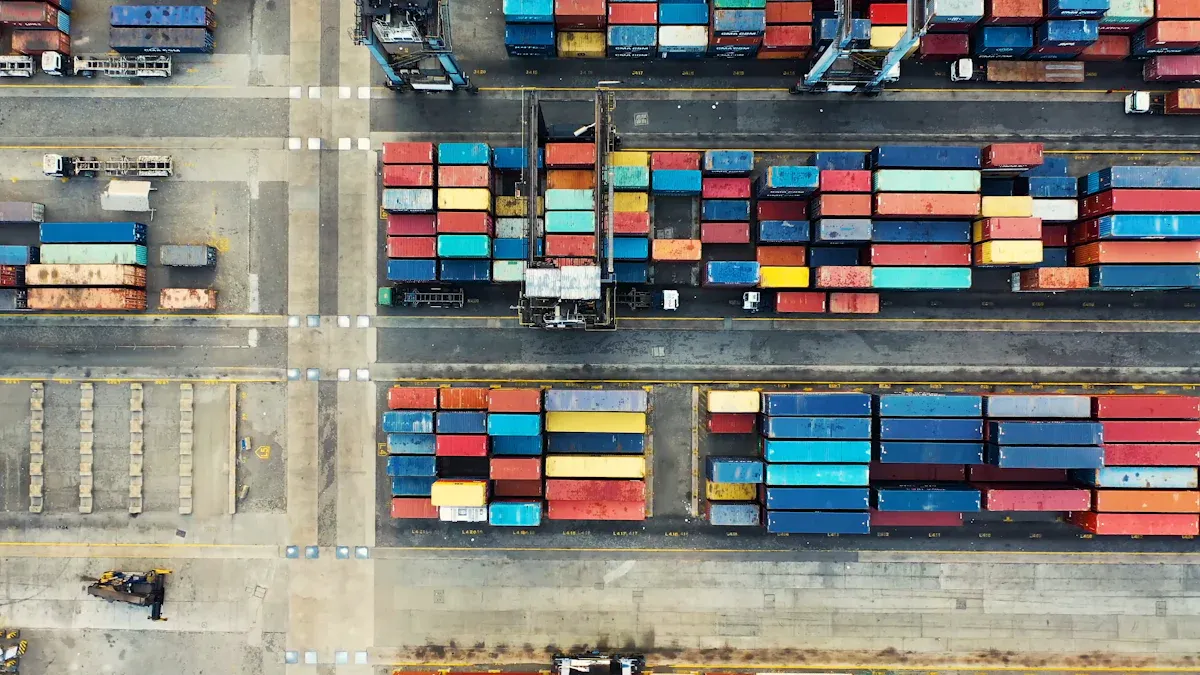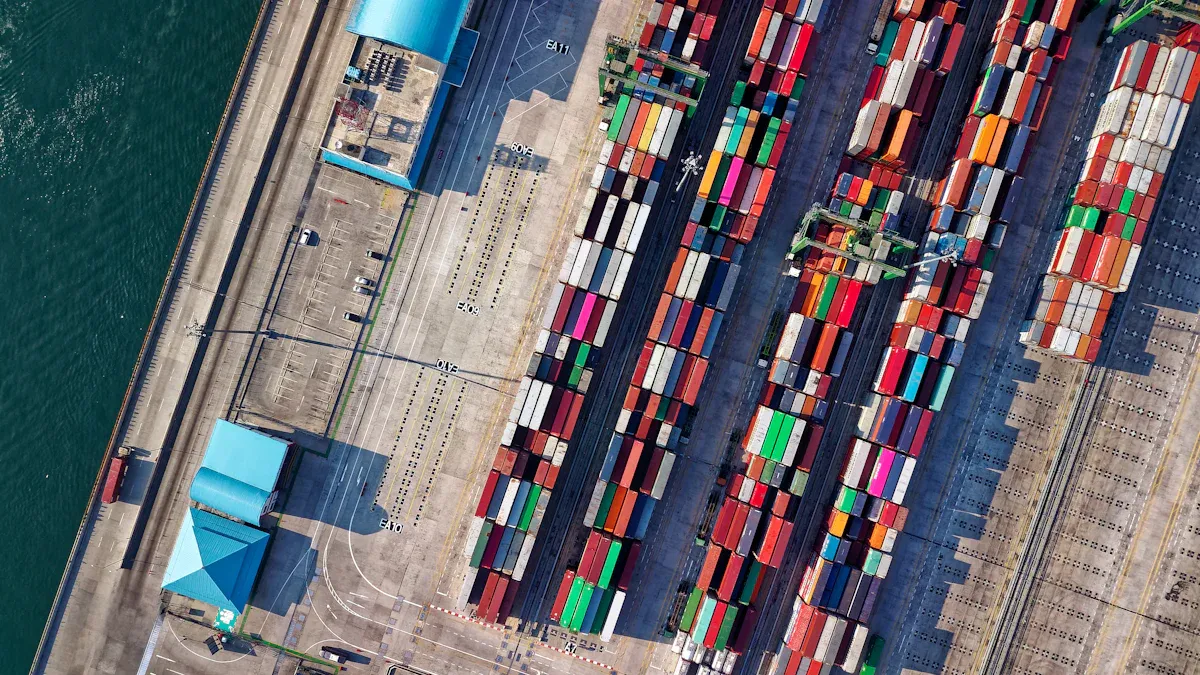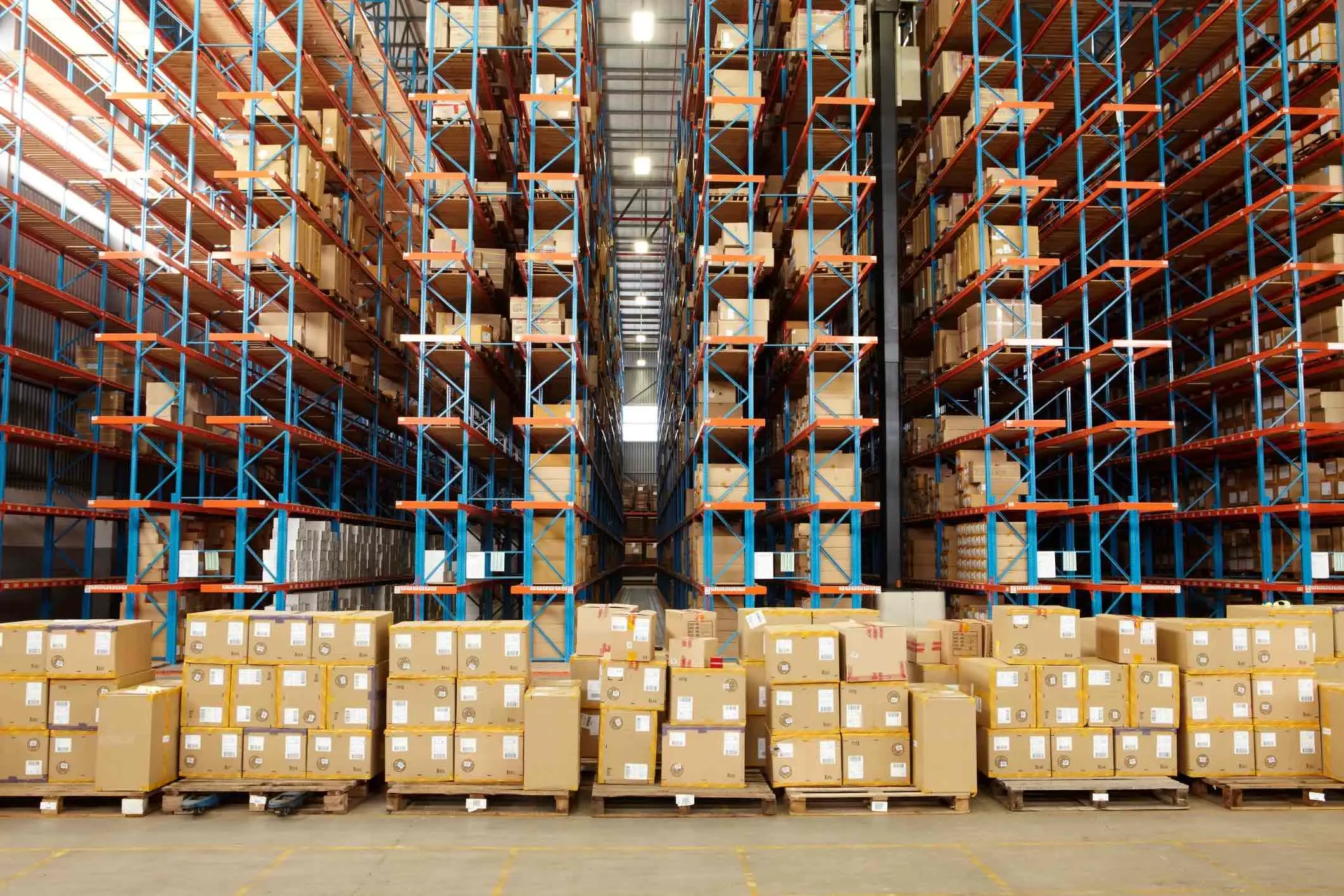Key Challenges and Practical Solutions in Multimodal Transport

Multimodal transport has big problems right now. These include things like infrastructure not matching, higher costs, and not enough workers. You can see these problems in the table below. Some good solutions are using better paperwork and planning routes well. These ideas help make things faster, more reliable, and cheaper. JUSDA uses smart and useful ways to fix these multimodal transportation problems.
Challenge Category | Statistic / Impact |
|---|---|
Infrastructural incompatibility | Over 13,200 cargo handovers are late; transshipment takes 2.8 days longer on average. |
Lack of standardization | 38% of terminals do not use real-time digital tools; people spend 3.4 hours typing in data by hand. |
Cost escalation | Logistics costs went up 11.8%; ocean freight prices reached $5,250 for each container. |
Geopolitical disruptions | There were 1.3 million route changes; global cargo handling costs went up 8.6%. |
Labor shortages | More than 980,000 shipments were late in the U.S. and EU. |
Key Takeaways
Multimodal transport has big problems like bad roads, high prices, and hard management, but solving these can make shipping quicker and cost less.
Using digital tools like live tracking and smart planning helps companies work well together, stop delays, and save money.
Training skilled workers and following rules closely keeps shipments moving well and helps customers trust the company.
Multimodal Transport Challenges

Infrastructure Issues
Multimodal transport needs strong and connected infrastructure. Many places have problems because their systems do not fit together well.
Many transport networks do not have fare systems that work together. This makes it hard to track goods and people across different carriers.
Cities often do not have enough sensors or ways to collect and share traffic data.
A lot of important data about events, weather, and road changes is missing.
These problems make it hard to watch and improve multimodal logistics. Bad connections and uneven networks create weak spots. When too much traffic goes through a few main places, the whole network gets weak. If something goes wrong, it is hard to send shipments another way.
A good transport network, like in Hong Kong, shows that connecting different modes makes the system stronger. But more connections can also make things more complicated and harder to control. Planners must think about efficiency, cost, and safety when building infrastructure. Walkability and smart planning help make switching between modes easier.
Technology Barriers
Technology is very important for modern multimodal logistics. Many companies have trouble using new digital tools.
High costs stop many logistics providers from buying advanced technology.
Some worry that new systems will mess up their current services.
Not enough skilled workers makes it hard to use and fix digital platforms.
These problems slow down the use of artificial intelligence and data analytics. Without digital tools, multimodal transport has more delays, higher costs, and bad coordination.Experts say real-time tracking, predictive analytics, and digital freight platforms are very important. These tools help companies watch shipments, fix problems, and save money. Without them, multimodal logistics cannot keep up with road transport.
Barrier / Issue | Explanation | Impact on Efficiency | Role of Digital Integration |
|---|---|---|---|
Data does not move smoothly between transport actors | Delays, mistakes, higher costs | Allows real-time sharing and transparency | |
Poor Collaboration | No integrated systems makes teamwork hard | Inefficiencies, longer wait times | Helps better coordination and trust |
Increased Costs | Manual work and mistakes cost more money | Less competitive than road transport | Makes routing better and automates tasks |
Conservative Industry Culture | People resist new tech because of cost worries | Slows down digital change | Leaders can push for new ideas |
Lack of Transparency | Hard to track shipments and spot problems | Less flexible and slow to react | Gives better visibility and quick action |
Regulatory and Customer Demands | Hard to meet rules without digital systems | Makes it hard to follow laws and be green | Helps with compliance and reporting |
Management Complexity
Managing multimodal logistics is much harder than using just one mode.
Each mode has its own rules, risks, and paperwork.
Companies must work with many carriers, each with different systems.
Tracking shipments is hard when goods switch between modes.
Lots of paperwork and manual work means more mistakes.
Communication problems happen because companies use only one main provider and lose track of others.
More steps mean more chances for damage, theft, or fraud.
Last-mile delivery costs go up when companies cannot work with many providers.
Multimodal logistics needs advanced platforms for planning, doing, and tracking. Without these, teams deal with disconnected systems, manual checks, and slow problem-solving.
Explanation | |
|---|---|
Managing Multiple Modes | Each mode is different, so it is hard to work together |
Risk Management | Risks change in each mode and place, so strong plans are needed |
Regulatory Compliance | Different rules in each country cause delays and extra costs |
Coordination & Communication | Many carriers and people make teamwork harder |
Extensive Documentation | More hand-offs mean more paperwork and confusion |
Increased Risk Exposure | More steps mean more chances for damage, theft, or fraud |
Visibility & Accountability | Harder to track and take responsibility for shipments |
Operational Integration | Needs advanced systems to connect all modes |
Regulatory Hurdles
Rules make multimodal transport very challenging.
Customs, security checks, and environmental laws change a lot. Each mode—road, rail, sea, and air—follows different international rules. This mix of laws makes moving goods across borders hard.
If companies do not follow the rules, they get delays, fines, or lose goods.
Customs delays happen when paperwork is missing or rules are not clear.
Duties, tariffs, and fuel prices add more costs.
Working with carriers, brokers, and government can break down and cause more delays.
Different goods, like dangerous or perishable items, need special care and papers.
Not following rules can mean shipment delays, fines, and damaged goods.
Best ways to fix this are using automated data capture, standard documents, and regular checks. Digital platforms and experienced providers help avoid problems and keep shipments moving.
Transport Mode | Regulatory Impact | |
|---|---|---|
Road | CMR Convention | Sets rules for road, but only covers road |
Rail | COTIF, CIM Uniform Rules | Sets rail rules, but is separate from other modes |
Sea | Hague-Visby, Hamburg, Rotterdam Rules | Different rules; Rotterdam tries to unify but is not used everywhere |
Air | Warsaw, Montreal Conventions | Sets air rules, different from other modes |
National | Multimodal Transportation of Goods Act, 1993 | Sets rules in India, but some gaps remain |
Operational Delays
Operational delays happen every day in multimodal logistics.
Crowded ports, bad weather, and world events like wars or strikes can stop shipments for days.
Schedule changes and traffic jams, especially in busy times, cause backlogs.
Customs problems, like missing papers or checks, slow down cargo.
Bad communication between shippers, carriers, and receivers means missed deadlines.
Old booking systems and no real-time tracking slow things down.
Delays in making cargo without enough extra time mess up the whole network.
Blind spots at terminals and ports, where updates are late or missing, make it hard to plan.
Bad data quality means teams spend more time checking info, which costs more and adds risk.
Broken data flows and no integration at key points cause bottlenecks.
Relying too much on carrier data, which may not cover all steps, leaves gaps in tracking.
Real-time tracking platforms help by giving up-to-date information in one place. Planning ahead, clear communication, and early paperwork help lower the risk of delays.
Multimodal logistics has many problems, like weak infrastructure, technology barriers, complex management, tough rules, and frequent delays. Companies must fix each of these to build a strong, reliable, and efficient transport network.
Solutions for Multimodal Logistics

Infrastructure Upgrades
Good infrastructure is very important for multimodal logistics. Companies check roads, railways, airports, and seaports to see what needs fixing. They look for places where upgrades will help the most, like making railways bigger or updating terminals. Intelligent transportation systems help control traffic and stop slowdowns. Careful planning makes sure money is spent well and helps the environment. Sometimes, public and private groups work together to pay for these projects.
Check if roads and railways connect well and have enough space.
Make railways bigger, fix terminals, and use smart systems for traffic.
Use data to pick projects that make the network work better.
Add new technology like real-time tracking and GPS to watch shipments.
Use smart computer programs to plan routes and save time and money.
Get transportation companies to work together using digital tools.
Watch key numbers like on-time deliveries and cost per mile to see progress.
New investments in multimodal infrastructure have made shipping cheaper and easier. These projects help more goods reach important places and lower costs for shippers. Better infrastructure also helps the economy by linking more areas to the world.
Digital Integration
Digital integration connects all parts of the transport network. Platforms like JusLink use AI and big data to share logistics information. This gives real-time updates, helps plan routes, and predicts what will happen next.
Aspect | Benefit | Statistic/Source |
|---|---|---|
End-to-End Visibility | Watch shipments in real time on all carriers | |
Improved Coordination | Teams work together better | Tracking systems make teams 30% more efficient |
Risk Mitigation | Get alerts when there are delays | Predictive analytics can save $2 million each year |
Operational Efficiency | Shorter wait times and fewer slowdowns | Lead times are up to 15% shorter |
Integration Capabilities | Data moves easily between all transport types | 60% of companies want multi-modal integration |
User-Friendly Dashboards | Easier to use and more productive | Productivity goes up by 20% |
Vendor Performance | Better contracts and more responsibility | Contract terms improve by 15-25% |
Business Alignment | Helps with risk, green goals, and following rules | 68% have fewer problems with tracking plans |
Digital freight matching lets shippers and carriers connect fast and track shipments better. Blockchain keeps documents safe and speeds up customs. These digital tools help all transport types work together, making logistics faster and stronger.
Process Optimization
Process optimization helps companies save money and deliver faster. IoT devices track shipments and manage trucks, which cuts delays and costs. AI helps pick the best routes and predicts problems.
Combining small shipments into bigger ones saves space and money, sometimes by 20%.
Route planning software and real-time tracking help avoid slowdowns.
Using shipping data helps get better deals with carriers.
Sending important shipments first makes sure they arrive on time.
Good packaging and training lower the risk of lost or broken goods.
Working with partners gives more choices and saves money by sharing resources.
JUSDA’s platforms show real-time data and smart reports. Companies can watch things like delivery times, cost per mile, and how well trucks are used. These tools help teams make quick choices and keep getting better.
Studies show that using big data and smart predictions saves money and improves operations. Companies using these tools deliver better and spend less.
Regulatory Alignment
Following rules is very important, especially when crossing borders. Companies plan routes and schedules early, pick local partners who know the rules, and use technology to track shipments.
Plan ahead and make backup plans for routes and transport types.
Work with local experts who know the rules and tech needs.
Use tech to keep paperwork updated and track shipments.
Train workers and use good customs agents to avoid problems.
Focus on being green and saving energy to follow environmental rules.
Making rules the same in different places, like in the EU, helps green transport and makes borders easier to cross. Digital tools help companies keep up with new rules, handle tariffs, and follow green laws. JUSDA’s solutions help with paperwork and tracking, so shipments move smoothly.
Companies that follow rules avoid fines and delays. They also build trust with customers and partners, which helps their business grow.
Skilled Workforce
Having skilled workers is key for solving logistics problems. Workers who know data, automation, and process improvement help companies use new tech and work better. Good training includes online classes, workshops, school partnerships, and hands-on learning.
Workshops give practice with new tools and systems.
Working with schools helps people learn the right skills.
Apprenticeships and internships give real-world experience and help people start logistics careers.
JUSDA trains workers so they can use new digital tools and handle new problems. Always learning helps the logistics network stay ready for changes.
Skilled workers help companies get the most from multimodal transport and stay ahead in global shipping.
JUSDA’s Multimodal Freight Transport Solutions
China-Europe Express Rail
JUSDA’s China-Europe Express Rail is a key part of its transport network. This rail connects over 30 cities in China to more than 80 cities in Europe. The trains move goods quickly, safely, and in a way that helps the environment. Shipping by rail takes about 16 days, which is much faster than the 36 days by sea. The service works for both full and smaller container loads. Customers can see where their shipments are with real-time GPS tracking. The rail also links with sea, air, and road, making it easy to switch between transport types. This gives customers a smooth experience. The table below shows important features and results:
Feature / Metric | Description / Value |
|---|---|
Transit Time | 17-18 days China to Europe |
Freight Volume (2021) | |
CO2 Emissions | 95% lower than air freight |
Coverage | 80+ European cities, 30+ Chinese cities |
Reliability | Reserved space, dedicated teams |
JusLink Intelligent Platform
JUSDA’s JusLink Intelligent Platform uses smart technology to help the transport network. The platform uses AI, IoT, and RFID to give real-time data and smart predictions. Teams can see shipments from start to finish and manage inventory as it moves. JusLink connects every part of the network, from the warehouse to the final stop. This makes teamwork easier and helps all transport types work together.
Real-time shipment tracking
Predictive analytics for delays
Dynamic inventory management
JusLink helps teams work smarter and faster with better teamwork.
Industry-Specific Services
JUSDA makes special transport solutions for electronics, automotive, FMCG, and healthcare. The network supports global storage, cross-border shipping, and e-commerce orders. JUSDA’s digital tools help with customs, lower mistakes, and speed up deliveries. Local teams in China, Vietnam, India, and North America give quick help. Customers get reliable, efficient, and flexible services that help them succeed.
Case Study: Multimodal Logistics Success
Sharp’s Supply Chain Transformation
Sharp is a big company that makes home appliances. They had big problems with their supply chain. Orders took too long to process. Moving goods cost too much money. They could not see where their shipments were in the network. Sharp needed help to make their multimodal logistics work better. JUSDA came in with smart solutions made just for Sharp. The team used new software, hardware, and better ways to do things. They brought in the JusLink platform to link all parts of the logistics network. This platform let Sharp track shipments in real time. It also helped suppliers, warehouses, and carriers work together. Sharp started using new ways to manage inventory and plan transport.
Results and Benefits
The changes made a big difference for Sharp. They spent 20% less on logistics and 70% less on labor. Orders got delivered 30% faster. Shipments became more accurate. Sharp could now see everything happening in their transport network. Teams tracked every shipment and fixed problems fast. The new system let Sharp handle more orders and reach new markets. JUSDA’s help gave Sharp a stronger and more reliable logistics system. This partnership proved that digital tools and good planning can fix hard multimodal logistics problems.

JUSDA Solutions
To provide you with professional solutions and quotations.
Multimodal transport has many problems, but good plans can fix them. Companies must have strong plans for infrastructure, technology, and management. JUSDA’s solutions help make transportation better and support these plans. Teams should check their plans, use new transport tools, and keep making their plans better. New ideas and teamwork help companies do well in multimodal transport.
